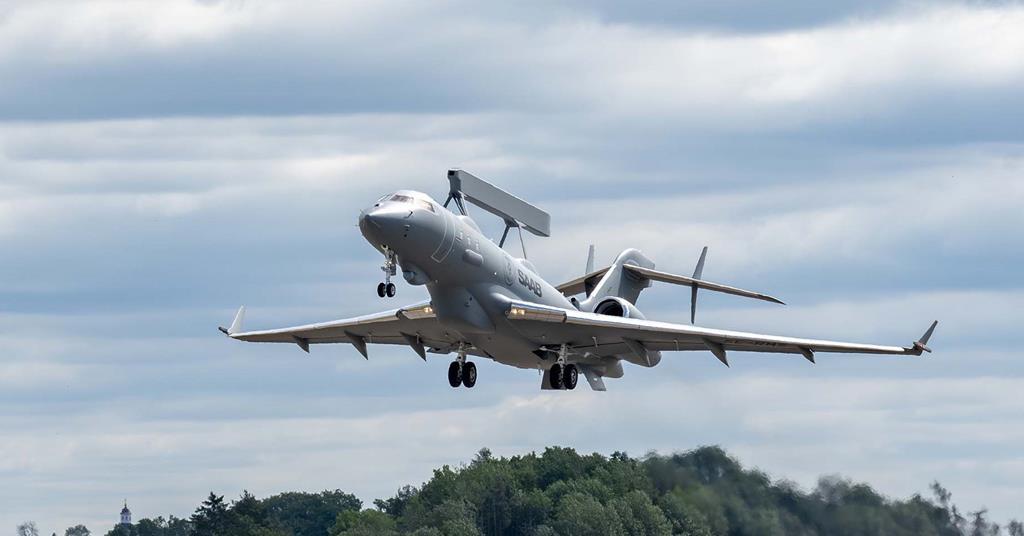Saab’s GlobalEye and Boeing’s E‑7 Wedgetail are increasingly seen as the flagship competitors in modern airborne early warning and control (AEW&C) systems. The GlobalEye is based on the Bombardier Global 6000/6500 business jet. It includes Saab’s Erieye ER AESA radar system. It also includes Leonardo’s Seaspray 7500E maritime radar. The aircraft carries a full set of intelligence sensors. These sensors cover air, sea, land, and electronic intelligence areas. GlobalEye can stay airborne for up to eleven hours.
The E‑7 Wedgetail is built on Boeing’s 737 airframe. It uses a Northrop Grumman AESA radar system. The radar is mounted in a distinctive “top hat” radome. The aircraft has been operational since 2012 with Australia. It has been adopted by the UK and South Korea. The U.S. also plans to acquire its own fleet.
Evolving Threats and Strategic Shifts
Recent geopolitical trends and procurement decisions highlight a pivotal crossroads for both programs. Saab has ramped up its production capability. It says it can convert up to four GlobalEye jets annually. This increase aims to meet growing global interest. Saab made a strong push at CANSEC 2025 in Ottawa. The company is bidding to supply Canada’s first AEW&C aircraft. It promotes combining Swedish sensor systems with Canadian-built airframes. Saab claims this approach could bring major industrial benefits.
In Europe, Saab aggressively markets the GlobalEye for regional defense. It promotes the jet as the backbone of a Nordic surveillance alliance. This effort taps into a push for strategic autonomy from the U.S. and NATO. Sweden, Denmark, Finland, and Norway are key targets for this vision. Saab proposes they use GlobalEye for multi-domain patrols. These patrols would cover both the Baltic and Arctic regions. The story is backed by government and defense-industry voices alike.
Pentagon Activates World’s Most Advanced Radar from Raytheon to Fight Hypersonic Threats
On the other side, the E‑7 Wedgetail’s future rests largely on U.S. decisions. The USAF’s plan for 26 aircraft has encountered resistance: the U.S. Secretary of Defense has publicly questioned its ability to survive in contested environments, citing a pivot to space-based ISR capabilities. The FY 2026 budget asked nearly $200 million for R&D but slashed allocation for buying, relying instead on carry-over from FY 25. Meanwhile, lawmakers argue that airborne platforms remain indispensable until space-based alternatives are fully capable. Inside the Pentagon, conflicts persist: space supporters argue satellites offer more survivable and global coverage, yet others warn satellites still face cloud-cover and latency issues and cannot fully match airborne command-and-control capabilities.
Technology and Capability Face-Off
Technology-wise, GlobalEye’s Erieye ER radar offers detection ranges up to 550 km at high altitude. It includes the Seaspray maritime radar as a complement. Seaspray can detect periscopes and small surface targets. It delivers full AESA performance with adaptive waveforms.
The E‑7’s AESA radar also provides wide-area surveillance coverage. It is set to receive upgrades in moving-target indication. Improvements in electronic warfare resilience are also planned. However, its single-radar setup limits the number of sensors onboard compared to GlobalEye.
Endurance and logistics support also diverge. The GlobalEye, based on a long-range business jet, supports extended missions of around 11 hours. It can cover roughly 12,000 km in ferry range.
In contrast, the E‑7 uses a commercial 737 aircraft for solid supportability. However, it needs aerial refueling to match GlobalEye’s patrol range. This limitation has been noted by both users and analysts.
Procurement Battles and Geopolitical Stakes
On the user front, Wedgetail boasts wide Five Eyes and NATO integration—used by Australia, the UK, South Korea, and now the U.S. in prototype form. GlobalEye’s current fleet flies with the UAE and soon Sweden, with Canada, Denmark, Finland, France, Poland, and South Korea all exploring procurement options.
GlobalEye Overpowers E-7 in High-Stakes Battle for Spy Plane Superiority in Nordic Region
The broader strategic dynamics are instructive. Canada’s upcoming AEW&C program has two main competitors. GlobalEye highlights domestic airframe production and supply chain integration. Wedgetail offers alliance compatibility and a U.S.-supported platform. Within NATO, Wedgetail is set to become the standard AEW&C aircraft. However, European defense sentiment increasingly leans toward GlobalEye. This is due to its continental identity and strong industrial backing.
Looking ahead, both systems appear to have roles in an evolving multi-layered surveillance architecture. Saab is scaling production and strengthening bids in Canada, Europe, and South Korea—while applying its new “Project Beyond” AI initiative to enhance real-time sensor fusion and autonomous decision-making aboard Gripen and potentially GlobalEye aircrafts. Boeing continues developing the U.S. E‑7 prototypes, but whether the aircraft receives full procurement remains uncertain in the face of space-ISR ambitions.
GlobalEye seems to be gaining momentum in short-term sales and industrial strategy, particularly among European and middle-power nations seeking autonomy. Wedgetail retains its primacy in the Five Eyes and NATO spheres and continues to draw congressional support—but its future is clouded by budgetary and operational debates. Ultimately, these platforms may not be adversaries but complementary layers: airborne AEW&C serving until space-based ISR matures sufficiently. The next few years of procurement and deployment decisions will decide whether both aircrafts remain mainstays—or if satellites redefine the battlefield’s skies.

